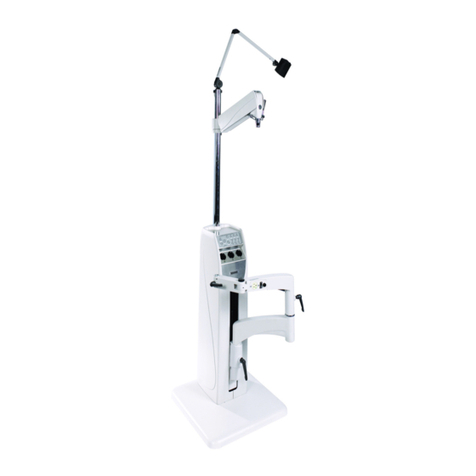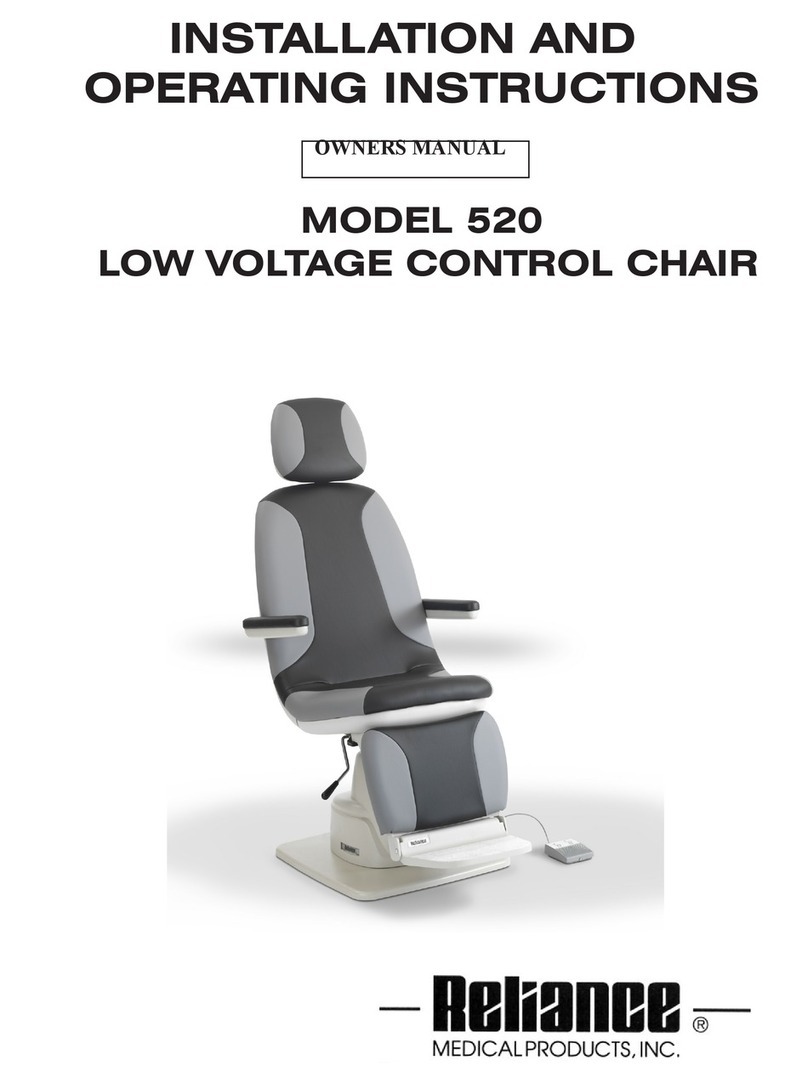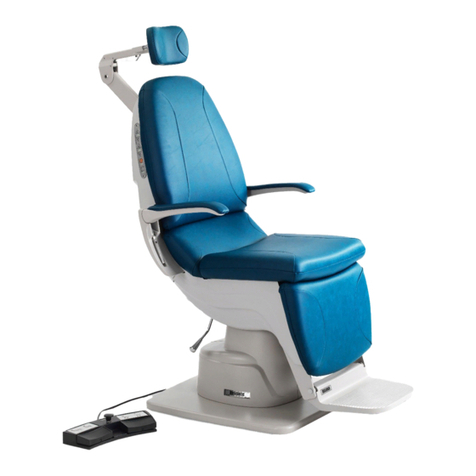
TABLE OF CONTENTSIMPORTANT
INFORMATION............................................4
1. INTRODUCTION........................................................5
TECHNICAL SPECIFICATIONS.........................................6
2. INSTALLATION...........................................................7
2.1. Unpacking.......................................................7
Chair......................................................................7
2.2. Assembly.........................................................7
Headrest................................................................7
Power Receptacle...................................................7
Setting Rotation Stop..............................................7
3. OPERATION.............................................................8
3.1. Stop Switch....................................................8
3.2. Chair Lift........................................................8
Raising & Lowering the Chair Lift with Membrane
Switches.................................................................8
Raising & Lowering the Chair Lift from the
Footswitch...............................................................8
3.3. Chair Top........................................................9
Raising & Reclining the Chair Top with
Membrane Switches................................................9
Raising & Lowering the Chair Top From the
Footswitch...............................................................9
3.4. Automatic Return...........................................10
3.5. Memory Feature............................................10
Programming the Memory Feature........................10
3.6. Revolving/Rotation........................................11
3.7. Arm Movement..............................................11
3.8. Footrest........................................................11
3.9. Headrest.......................................................11
Operation-No. 18, 22 Headrest..............................11
Adjustment-No. 18, 22 Headrest............................12
Operation-No. 10, 30 Headrest...................................12
Operation-No. 11, 21, 31 Headrest..............................12
Adjustment-No. 11, 21, 31 Headrest...........................12
Operation C6 Headrest..........................................12
Adjustment C6 Headrest.......................................13
4. PROGRAMMING THE CHAIR....................................13
4.1. Safety/Shutdown Feature..............................13
To ENTER Safety/Shutdown Mode..........................13
To EXIT Safety/Shutdown Mode.............................13
4.2. Individual Programming of the RAISE TOP, RECLINE
TOP, RAISE BASE, and LOWER BASE switch located on the
Chair Back or Footswitch..........................................13
To ENTER Setup Mode ..........................................13
To EXIT Setup Mode..............................................14
4.3. BEEP-ON-SWITCH Feature.............................14
4.4. Auto Up/Retinal Feature................................14
To ENTER Auto Up/Retinal Mode............................14
To EXIT Auto Up/Retinal Mode...............................14
4.5. Home Feature...............................................15
To PROGRAM the Home Mode Feature...................15
To UTILIZE the Home Mode Feature........................15
To EXIT the Home Mode Feature............................15
5. LOCATING AND REPLACING FUSES.........................15
5.1. Fuse Replacement..........................................15
TROUBLESHOOTING GUIDE..........................................17
CLEANING AND MAINTENANCE....................................18
PARTS LIST.................................................................20
Model 7000 Chair Assembly..................................21
Model 7000 Chair Assembly (Premiere)................22
Chair Top Assembly...............................................23
Chair Base Assembly.............................................26
Lift Assembly.........................................................28
#11 Headrest Assembly.........................................30
#10 Headrest Assembly.........................................31
#18, 22 Headrest Assembly...................................32
#21 Headrest Assembly.........................................34
C6 Headrest Assembly.............................................36
#30 Headrest Assembly.........................................38
#31 Headrest Assembly.........................................40
Wiring Diagram - 7000..........................................42
LIMITED WARRANTY.....................................................47
































